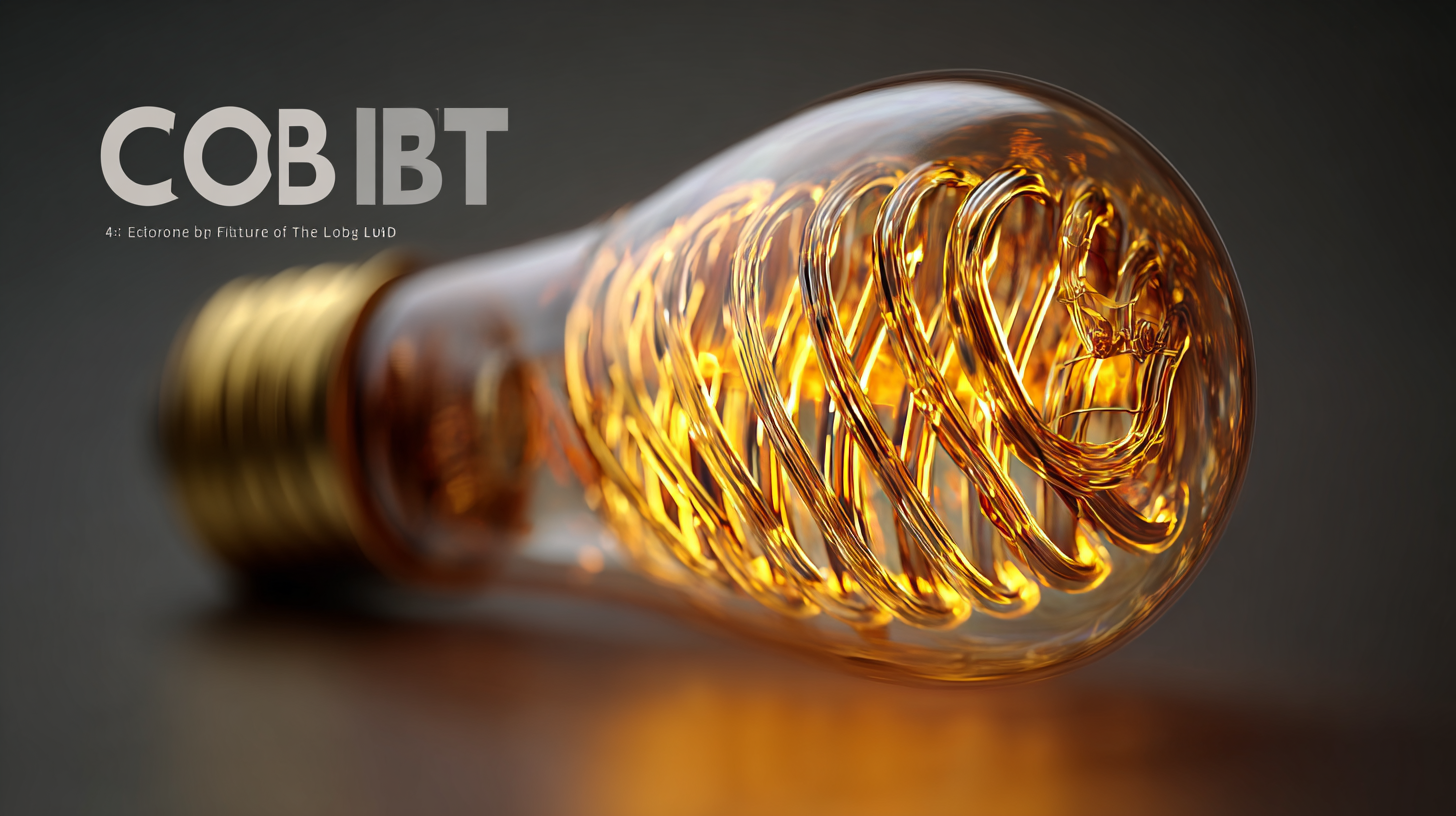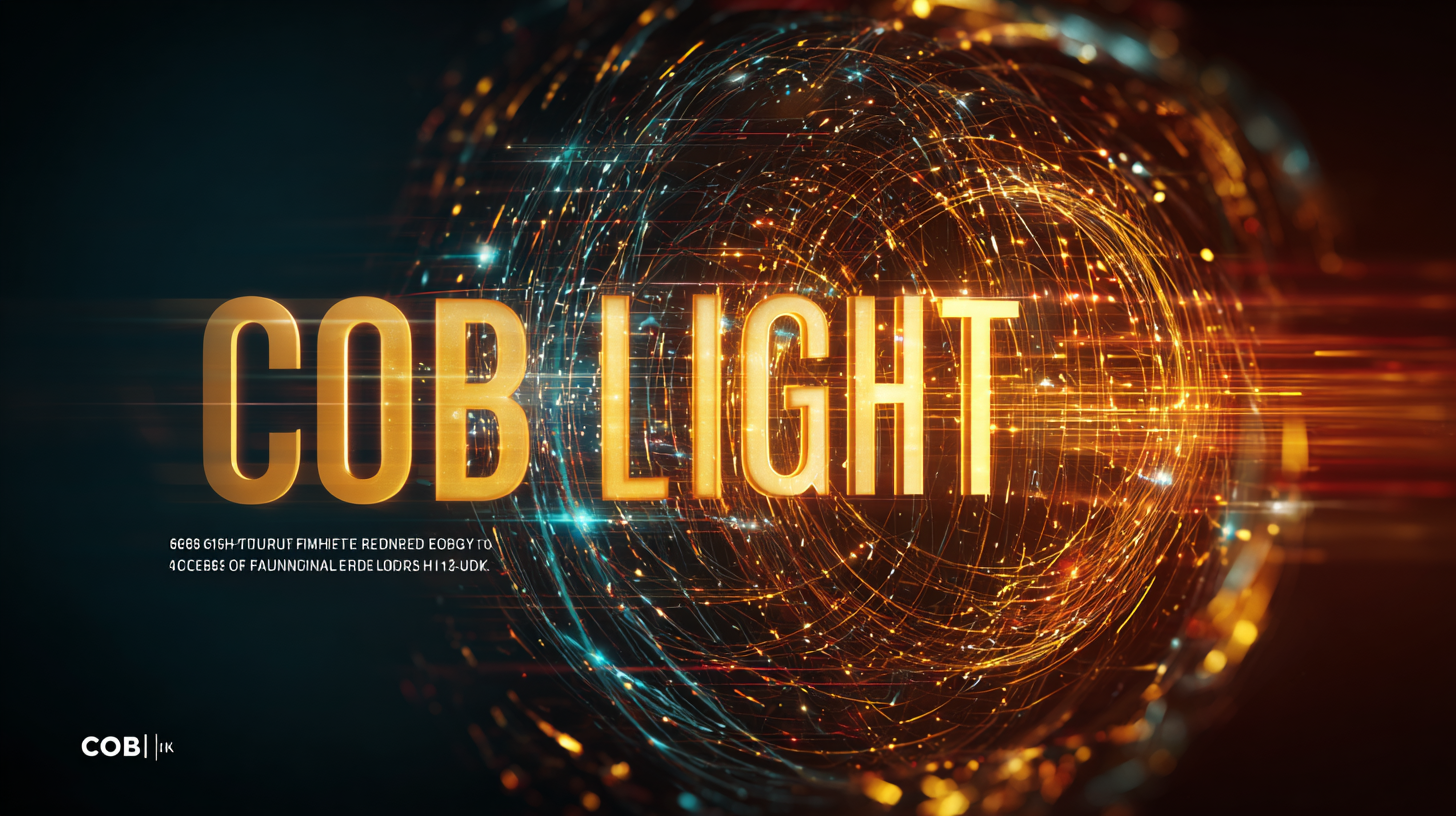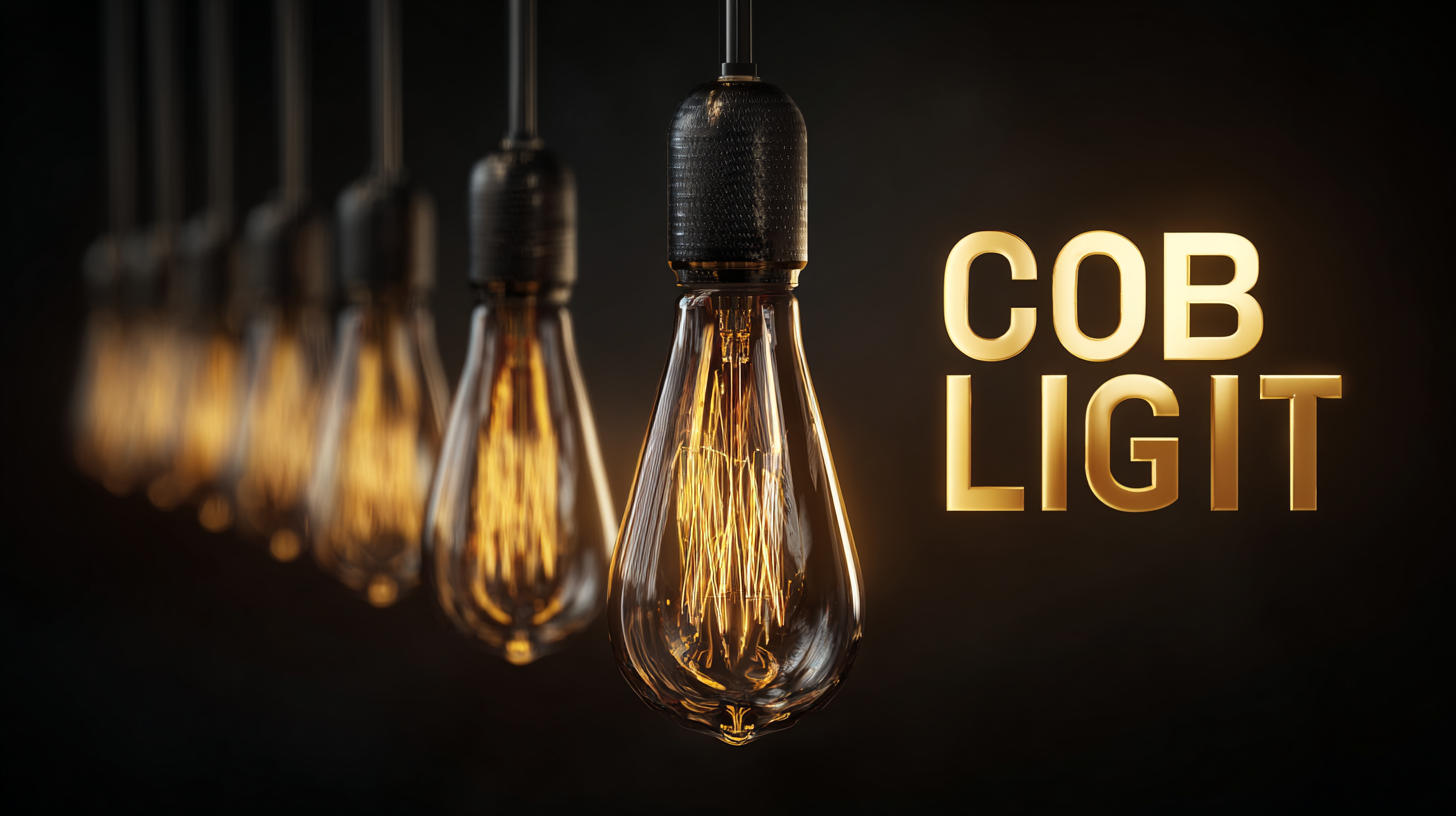
Exploring the Future of Energy-Efficient Lighting with the Best Cob Light Innovations
As the global demand for energy-efficient solutions continues to rise, the lighting industry is witnessing a transformative shift towards innovative technologies that enhance both performance and sustainability. One of the key advancements in this field is the development of COB (Chip-on-Board) light technology, which offers superior energy efficiency and luminous efficacy. According to a report by the International Energy Agency (IEA), lighting accounts for nearly 15% of global electricity consumption, and transitioning to advanced lighting solutions like COB lights could reduce this figure significantly. With their ability to emit a higher quality light while consuming less power, COB lights represent a promising alternative for both residential and commercial applications. This blog will explore the latest innovations in COB light technology, highlighting their technical specifications and the future they hold for energy-efficient lighting solutions.

Future Trends in Energy-Efficient Lighting: A Look Ahead to 2025
The future of energy-efficient lighting is poised for significant advancements as we move toward 2025. With the global emergency lighting market projected to grow from $7.71 billion in 2024 to $8.45 billion in 2025, and reaching an impressive $13.68 billion by 2032, the momentum behind sustainable lighting solutions is unmistakable. Innovations in COB (Chip on Board) lighting technology are expected to lead this charge, enhancing not only the efficiency of energy consumption but also the quality of light delivered. As businesses and consumers alike demand more eco-friendly and cost-effective lighting options, the industry is responding with cutting-edge solutions designed to meet these needs.

In parallel, the global LED phosphor market is on an upward trajectory, projected to reach approximately $326.7 million by 2025, with a steady growth rate anticipated through 2033. This growth reflects a broader trend towards integrating innovative lighting technologies in various sectors. The use of dynamic lighting control systems is expected to become more commonplace, allowing users to optimize energy use and customize lighting experiences according to their specific environments. As we approach 2025, the confluence of these trends will shape a new landscape for energy-efficient lighting, making it an exciting time for both consumers and industry players.
The Rise of COB Technology: Benefits for Sustainable Lighting Solutions
As the demand for sustainable lighting solutions continues to rise, the chip-on-board (COB) LED technology is making significant strides in the energy-efficient lighting market. COB technology boasts a higher density of LED chips on a single board, resulting in brighter light output while consuming less energy. With the global chip-on-board LED market projected to grow from an estimated USD 3.20 million in 2024 to around USD 12.52 million by 2034, it is evident that this innovation is reshaping the future of illumination.
One of the standout benefits of COB technology is its ability to deliver uniform light distribution and reduced glare, making it ideal for both commercial and residential applications. Innovators in the industry are keenly focused on enhancing the efficiency and lifespan of these lighting solutions, ultimately contributing to more sustainable building practices. Furthermore, advancements in the materials used in COB designs promise to improve heat dissipation and reliability, which are critical factors in extending the lifetime of LED products.
Tips: When selecting COB lighting solutions for your space, consider the color rendering index (CRI) to ensure optimal visual quality. Additionally, focus on energy ratings to maximize efficiency and reduce overall energy costs. Don't overlook the importance of installation; partnering with professional installers can help you achieve the best results and enhance the longevity of your lighting system.
Innovative Applications of COB Lights in Residential and Commercial Spaces
As energy efficiency becomes a focal point in both residential and commercial sectors, COB (Chip on Board) lighting innovations are leading the charge. In homes, COB lights provide a versatile solution for various applications, from ambient lighting in living rooms to task lighting in kitchens. Their compact design allows for sleek integration into fixtures, maximizing the aesthetic appeal while minimizing energy consumption. Furthermore, the high color rendering ability of COB technology enhances the vibrancy of interior spaces, making it a favored choice among homeowners and designers alike.
In commercial settings, the advantages of COB lights are equally compelling. Retail environments benefit from the focused, bright illumination that COB technology offers, helping to highlight products and create inviting atmospheres. Moreover, their longevity and low heat output contribute to significant cost savings over time, aligning perfectly with the sustainability goals many businesses strive to achieve. Restaurants also find COB lights advantageous; they can create warm, inviting spaces that enhance the overall dining experience while keeping energy costs in check. Through these innovative applications, COB lights are transforming both home and business environments into energy-efficient, visually appealing spaces.
Impact of COB Lighting on Energy Consumption and Cost Savings
The rise of Chip-on-Board (COB) lighting technology is revolutionizing the way we think about energy consumption and cost savings in the lighting industry. COB lights, which feature multiple LED chips mounted directly on a single substrate, offer significant advantages over traditional lighting options. According to a report by the U.S. Department of Energy, using LED lighting, including COB technology, can reduce energy consumption by up to 75% compared to incandescent bulbs. This shift not only helps reduce overall energy demand but also leads to substantial cost savings for both consumers and businesses.

Furthermore, the cost-effectiveness of COB lights extends beyond mere energy savings. A study from the International Energy Agency (IEA) indicates that the longevity of COB LED fixtures can outlast traditional lighting sources by up to 25 times. This longevity results in reduced maintenance costs and lower replacement frequency, providing financial benefits over the product's lifespan. For those looking to transition to more energy-efficient lighting solutions, investing in COB technology can yield impressive returns.
Tips for maximizing energy savings with COB lighting:
1. Consider using dimmers or smart controls to optimize energy use based on actual needs.
2. Perform regular maintenance to ensure lights operate at peak efficiency.
3. Take advantage of government incentives for energy-efficient upgrades, which can further alleviate initial investment costs. By making informed choices, users can fully harness the benefits of COB lighting technology.
Predicting the Market Evolution of COB Light Innovations by 2025
As we look toward 2025, the market for
chip-on-board (COB) light innovations is predicted to experience
significant growth, driven by the increasing demand for
energy-efficient lighting solutions. According to a report by
MarketsandMarkets, the global LED market is poised to grow from
$45 billion in 2020
to over $135 billion by 2025,
with COB technology playing a crucial role in this expansion due to its superior efficiency and performance.
One of the key factors influencing this evolution is the rising awareness of
energy conservation and the environmental impact of
traditional lighting solutions. A study by Fortune Business Insights indicates
that the COB lighting segment is projected to witness a compound annual growth rate (CAGR) of approximately
18% between now and 2025.
This surge is primarily attributed to the increasing applications of COB lights in residential, commercial,
and industrial sectors, where the focus is shifting toward sustainable and long-lasting lighting options.
Moreover, advancements in COB technology, such as improved thermal management and color rendering capabilities,
are set to enhance product offerings significantly. Research from Grand View Research
highlights that innovations in design and integration of smart technology in COB lights will further propel their
adoption, as consumers prioritize versatility and efficiency in their lighting choices. This trajectory indicates
a promising future for the COB lighting market, reshaping how we illuminate our spaces sustainably.
